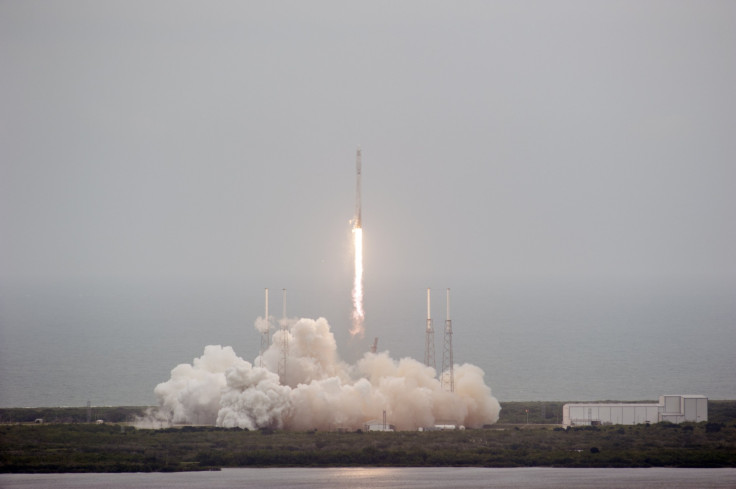SpaceX Launch Is A Success, Dragon Spacecraft To Reach International Space Station By Easter [VIDEO]
Despite some bad weather, Friday's SpaceX International Space Station commercial resupply (CRS-3) launch was a success. Carrying close to 2.5 tons of supplies, food and science experiments, the Dragon spacecraft is expected to reach the International Space Station on Easter morning.

The fourth time was the charm for SpaceX following three delays ahead of Friday’s launch. Most recently, a helium leak from the Falcon 9 rocket scrubbed the launch on Monday and a forecast of possible rain and thunderstorms threatened Friday’s launch. The weather cleared up and the Dragon spacecraft launched at 3:25 p.m. EDT from Launch Complex 40 at the Cape Canaveral Air Force Station.
The Dragon spacecraft is carrying close to 5,000 pounds of cargo to the ISS. The spacecraft is carrying 17 science experiments for NASA and seven Japan Aerospace Exploration Agency (JAXA) experiments. Some of the science experiments include the Vegetable Production System (VEGGIE) in which the Expedition 39 crew members will grow plants and lettuce and the Optical Payload for Lasercomm Science (OPALS) which will test a laser communication system to send data to Earth. Other cargo includes a pair of legs for the space station’s robotic astronaut, Robonaut 2, spacewalk equipment, hardware and computer supplies.
As part of its mission, the Falcon 9 rocket delivered five small satelites, CubeSats, into orbit. The ISS crew members will unpack the cargo and fill the Dragon spacecraft with completed experiments, equipment and hardware.
William Gerstenmaier, NASA associate administrator for human exploration and operations, said in a statement, “The diversity and number of new experiments is phenomenal. The investigations aboard Dragon will help us improve our understanding of how humans adapt to living in space for long periods of time and help us develop technologies that will enable deep space exploration.”
NASA expects the Dragon spacecraft to reach the ISS Easter morning. NASA astronaut Rick Mastracchio and ISS Commander Koichi Wakata, from JAXA, will operate the space station’s robotic arm, the Canadarm2, which will grapple the spacecraft and attach it to the Harmony node. While food and care packages are part of the cargo, NASA is staying silent about any Easter eggs or chocolate bunnies were included as part of the manifest.
For Elon Musk, SpaceX CEO, the launch was an important one as it marked the first test of Falcon 9’s landing legs. The company’s goal is to create a reusable rocket that can land upright on Earth. On Friday, the Falcon 9 performed a second engine burn that slowed down its descent and splashed down into the Atlantic Ocean. A test flight using the Falcon 9’s rocket was a success. The rocket reached a height of around 250 meters (820) feet before landing upright.
With the Dragon spacecraft arriving on Sunday, NASA is going ahead with a scheduled April spacewalk to replace an unresponsive computer. The Dragon spacecraft will detach from the space station and return to Earth on May 18, notes NASA.
A video of the SpaceX launch, courtesy of NASA, can be viewed below.
© Copyright IBTimes 2024. All rights reserved.












